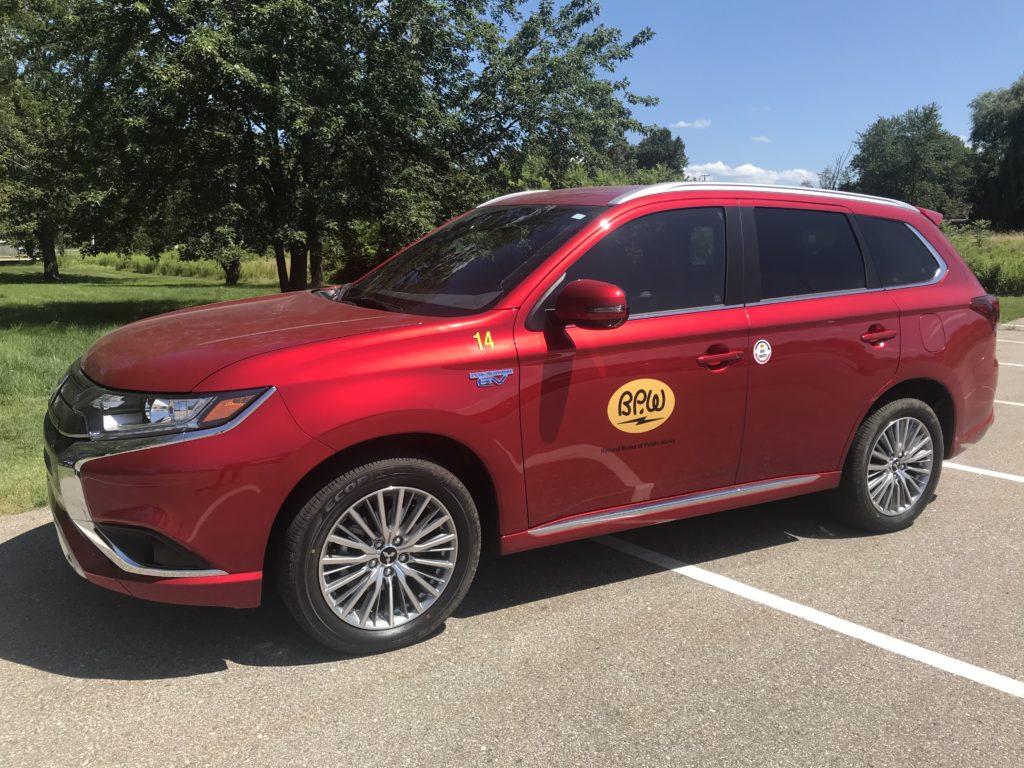By Barry Rutherford, Holland Board of Public Works
We all like to get value out of our hard-earned dollars. Whether we are buying groceries or data plans for our phones, or even determining whether to buy a daily or annual pass to a park, we are constantly calculating the best value.
Value calculations can change over time, and we are not always aware of the impact of those changes. When electric cars were introduced, the cost was high, the mobility was limited, and the convenience was limited. Now, however, those values have changed.
Let’s compare today’s electric car to a gas car powered by an internal combustion engine (ICE).
Cars and trucks powered by the ICE have been the workhorses of the transportation industry for a century. The ICE got us off the horse and buggy, and it serves our transportation needs well as we drive about.
The ICE, however, has a big drawback. Vehicles with the ICE are about 20 percent efficient, meaning that only 20 percent of the fuel actually goes to power the engine. The rest, or 80 percent, is burned up as heat. It does not help move your car down the road. What happens to that 80 percent? So much heat is made that cars need cooling systems (radiator) to remove the heat. Most us have seen a car on the side of the road with steam coming up from under the hood from a failed cooling system.
Until recently, there haven’t been any viable options to the ICE. Today’s electric vehicle’s (EV) motors are about 80 percent efficient, a huge improvement over an ICE. EV motors are more efficient because there are fewer moving parts with less friction giving off heat. This also means less maintenance because of fewer parts and no cooling system to break down.
In addition to the mechanical advantages, the price of electricity to fuel an EV is cheaper than gasoline to fuel an ICE. According to energy.gov, the average price of a gallon of gas in Michigan is $2.09 and the equivalent for electricity, the eGallon, is $1.47. It should be noted that electricity prices do not fluctuate like gas prices do, depending on global politics. When gas prices were over $4 per gallon, electricity prices barely moved.
Changing from an ICE-powered vehicle to EV supports the vision of the 40-year Holland Community Energy Plan, which envisions that 7 percent of our local transportation fleet will be EV by the year 2050.To encourage residents to adopt EVs, Holland Board of Public Works offers a $300 rebate for a home charger and a discounted rate for charging your EV at night and weekends.
In summary, the value of an EV over an ICE are: They are cheaper to fuel, they are cheaper to maintain, and they are more convenient to fuel (you can charge an EV at home). EV prices keep coming down and more models are becoming available every year.
Go to https://hollandbpw.com/en/electric-vehicles for more information about EV, rebates for EV chargers, and discounted rates for EV charging. Also, look for Holland BPW’s new Facebook group dedicated to all things EV.
Barry Rutherford is Holland BPW’s energy efficiency engineer. He develops customer education and energy savings programs.
This Week’s Sustainability Framework Theme
Transportation: The movement of people, goods, and services within the area is an evolving system that links us to our regional, national and global networks.
ABOUT THIS SERIES
Living Sustainably is a collection of community voices sharing updates about local sustainability initiatives. It is presented by the Holland-Hope College Sustainability Institute, a joint project of Hope College, the City of Holland and Holland Board of Public Works. Go to www.hope.edu/sustainability-institute for more information.


